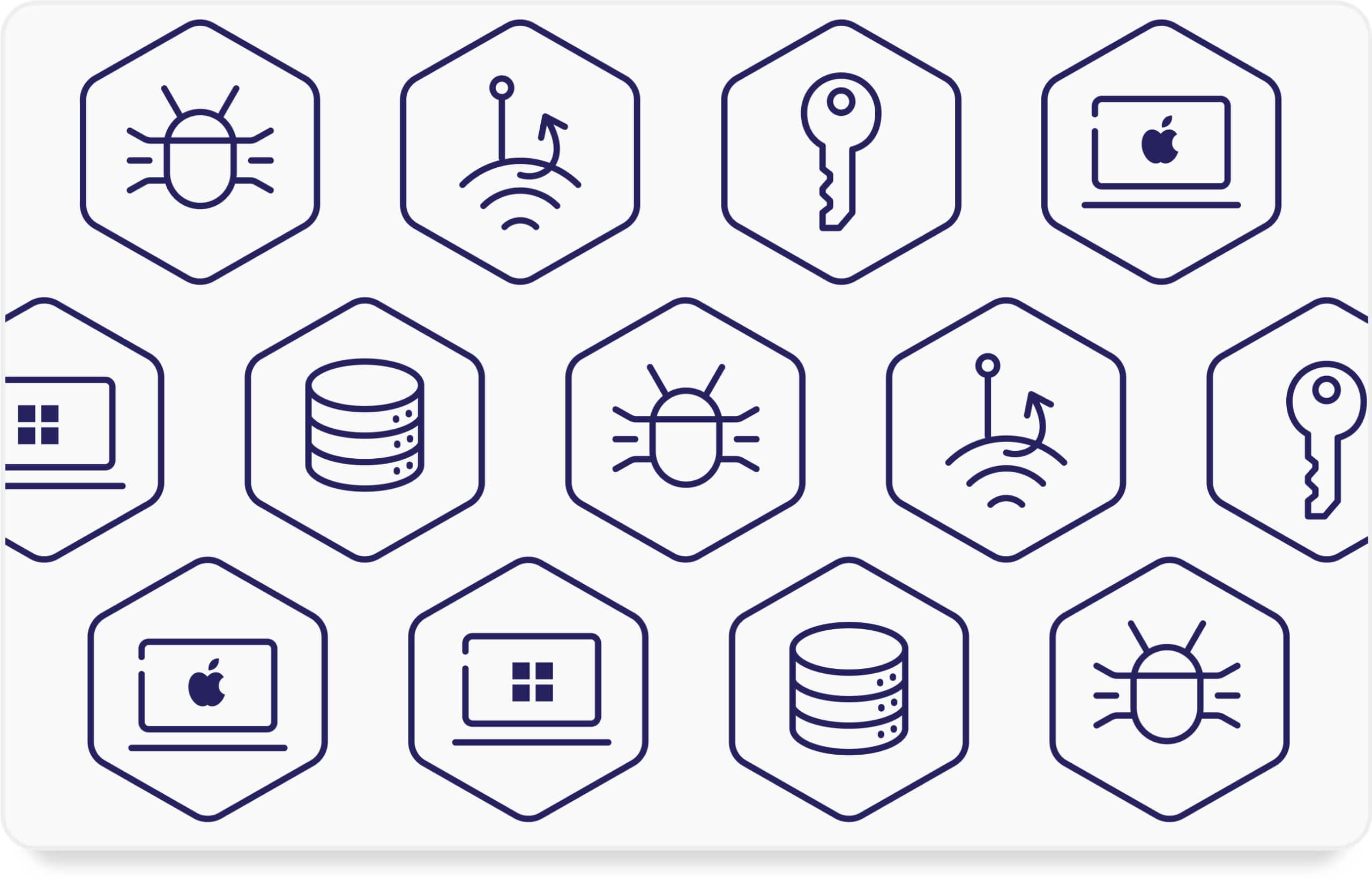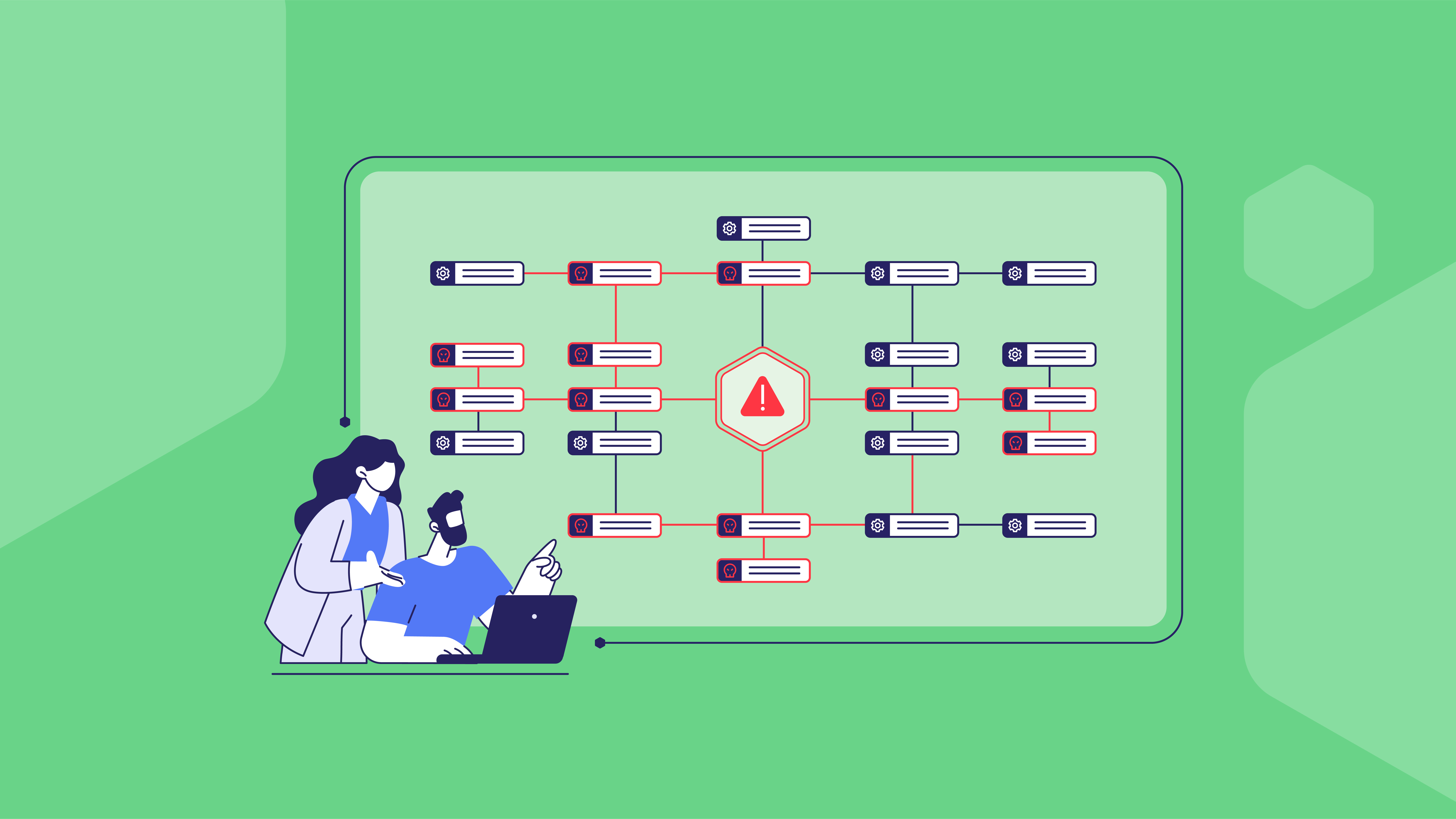Cyber threats are more common (and damaging) than ever. It’s time for businesses to start taking their cybersecurity more seriously. Any unprotected device connected to your network becomes a serious weakness in your armor.
Endpoint detection and response (EDR) is an essential part of protecting your organization. In this article, we’ll cover what EDR is, how it works, and what you should consider before implementing an endpoint security solution.
What Are Endpoints?
An endpoint is any device at the end of a network connection that can receive and transmit data. This includes laptops, mobile phones, tablets, and even IoT devices like smart TVs, printers, and security cameras.
Protecting endpoints can be challenging. The nature of endpoint devices only adds to the complexity of securing them. Operating systems, apps, programs, and even the endpoint user and their habits can vary dramatically. The bring-your-own-device (BYOD) and the hybrid working trend have also meant that security teams must protect various increasingly mobile endpoints that can easily get stolen or lost. Modern EDR security solutions must be more flexible and robust than ever to address these challenges.
Endpoint detection and response (EDR) solutions continuously gather and analyze threat-related data from endpoints. The primary goal of EDR is threat detection — finding security breaches as soon as they occur and responding accordingly.
EDR is essentially an umbrella term for software that monitors your endpoints and alerts your teams to any security incidents or suspicious activity it detects.
EDR solutions are highly varied in their capabilities and components. One EDR tool could be purpose-built with a specific function in mind; another could simply be a part of a larger security monitoring solution or a set of tools used together to detect and contain advanced threats.
How Does EDR Work?
You could think of antivirus software as the first iteration of modern EDR. Whereas antivirus software protects endpoints against known types of malicious software, EDR solutions can find new threats and detect malicious behavior during an active incident, e.g., detecting file-less malware attacks or stolen credentials that your antivirus solution won’t pick up.
Using behavioral analytics, artificial intelligence, and threat hunting, EDR looks for any anomalies that antivirus solutions might miss and flags suspicious behaviors, like process executions, network connections, or file manipulation that seem out of the ordinary.
The dedicated agent gathers and organizes historical data from logs, files, running processes, configurations, and other sources. In contrast, the EDR manages and analyzes the collected information to spot anomalies. EDR’s advanced analytical capabilities make it highly effective against active attacks and modern threats, including ransomware, malware, advanced persistent threats, and exploit chains.
When any suspicious behaviors are detected, the EDR agent installed on the endpoint raises an alert so the security team can act. This typically involves isolating the host system from the rest of the network to contain the attack and prevent it from spreading to other endpoints or another form of corrective action. The EDR may also allow teams to diagnose further issues, perform an in-depth forensic analysis, or investigate threats in more detail. This enables security teams to establish timelines, gather artifacts, or identify affected systems after the breach.
Some EDR solutions include more advanced remediation capabilities that allow the security team to terminate processes or services. Choosing your EDR solution carefully according to your existing security solutions and resources is vital.
The most basic EDR solution will only collect and display data and trends and requires security analysts and operators to make decisions about responding to threats and anomalies. Advanced EDR systems will use machine learning to identify and alert teams to emerging threats, aggregating information from the vendor to provide more comprehensive protection.
What Are the Key Components of EDR Security?
Your EDR security solution provides a central hub where endpoint data is collected, correlated, and analyzed, and alerts and threats are coordinated and responded to. It usually consists of three components:
- Endpoint software agents that monitor and collect data into a central database, e.g., the various processes, network connections, data transfers, and other actions conducted across endpoints.
- Automated response tools that use pre-configured rules to identify known types of security breaches and then trigger a response, including sending an alert or logging off the end user.
- Forensic analysis tools that can rapidly diagnose threats that are outside of the pre-configured rules, as well as threat hunting and post-mortem tools. These tools use machine learning to evaluate and correlate large volumes of data to identify behavior patterns and forensic tools that help IT security teams investigate breaches and threats that may still exist undetected in the endpoint.
Considerations in EDR Security Solutions
Every company needs an EDR solution, but it’s important to remember that EDR systems are only concerned with endpoints, like workstations. EDR solutions do not monitor your network, and if you have a more sophisticated system, you may want to look for a more robust solution.
A SIEM (security information and event management) package, for example, will gather information from your endpoints, network scans, internet logs, and firewalls and will usually include EDR as part of the solution. However, you will need a security operations team to investigate and respond to threats.
Here are a few key considerations before choosing an endpoint solution:
Basic EDRs Can be Limiting
Basic, standalone endpoint detection and response solutions are often little more than next-generation antivirus solutions. These solutions may not be able to detect unknown or emerging threats, which means you may need to combine them with additional endpoint protection solutions to detect malware threats and remediate attacks.
Staff Requirements
Some EDRs aren’t integrated with existing AV solutions, so your security team must monitor two agents and two management consoles. Some will detect each threat and action as a separate event and review them individually, generating multiple false positives and requiring significant manual input from IT staff. Your team may not have the capabilities or resources to monitor and manage alerts effectively, so make sure your EDR solution doesn’t strain your team.
Budgeting
Even if complexity isn’t an issue, cost can be. According to Capterra, the average small business should expect to spend at least $37 per user (or as much as $130 per user), depending on the solution they choose. Other solutions charge a fee per endpoint. Make sure you consider the number of endpoints, users, and your budget before choosing a solution.
EDR Doesn’t See the Big Picture
Your EDR visibility is limited to endpoints. It doesn’t consider the broader set of organization-wide logs from the cloud or external network traffic. The more information it can access and correlate, the better your ability to detect and respond to threats.
You Need to Cover All Your Endpoints
Your office is filled with smart devices. Remember that each IoT gadget is an endpoint. One hacker recently infiltrated over 150,000 printers to raise awareness about how smart devices can create gaps in your cyber defensive posture. Your smart fridge or security cameras can expose your entire network to attack, which is why a comprehensive audit of connected devices has to take place before implementing any solution.
Find a Solution That Offers Real Endpoint Protection
Not all endpoint detection and response solutions are made equal. You have to find a solution that meets your needs from a resource and protection standpoint.
Coro offers an Endpoint Security solution designed to cater to the cybersecurity needs of small to mid-size businesses (SMBs), providing advanced threat detection and remediation through AI automation and machine learning.
Unlike traditional endpoint solutions that can take days or weeks to configure and deploy, Coro’s solution takes 15 minutes to set up. This quick deployment process can save valuable time for IT teams. Once the solution has been deployed, AI automation handles a significant portion of tasks and tickets, reducing the workload on IT teams.
Coro’s Endpoint Security is designed to be cost-effective for SMBs. It offers a low cost per user and aims to alleviate the need for expensive labor and overpayment for enterprise-level features. Our EDR solution was also designed to empower users with limited cybersecurity knowledge. It provides a single dashboard for monitoring and controlling the cloud-based system, equipped with simple yet robust features.
1-Click-Resolve™ streamlines the process of addressing issues and eliminates the need to switch between complex systems to resolve tickets, ultimately saving time and resources.
In addition to its EDR (Endpoint Detection and Response) solution, Coro offers Managed Detection and Response (MDR) services. This service combines the power of the Coro platform and EDR solution with the expertise of dedicated security professionals.
Don’t leave your endpoints under-protected or your teams overwhelmed with alerts.
Consider Coro’s comprehensive security solution for your business today.





















